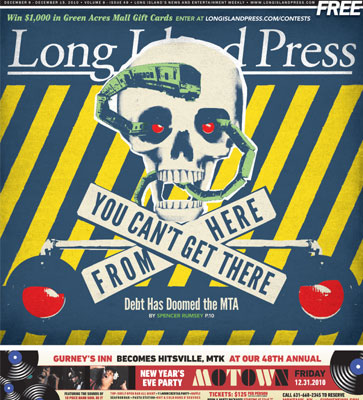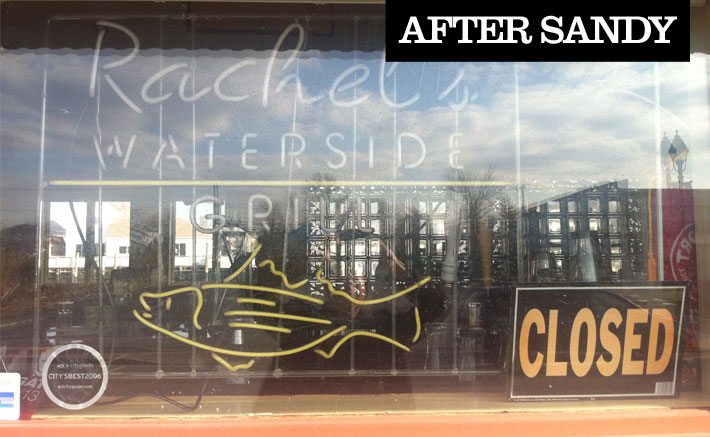
WATCH THE GAP
In the last two decades, the MTA says it’s committed $72 billion to restoring and improving our region’s transportation system. But as the state has cut back its support due to its own staggering budget problems, the agency has had to come up with ever more creative ways of bridging the gap.
Now, it borrows and spends just to keep the system going. And they’re about to max out their credit card. Paying the debt service on what’s already been borrowed comes out of the operating budget, about $2 billion of a $12 billion annual budget, or roughly 17 percent.
“The MTA is the fifth largest government borrower in the U.S.,” says Gene Russianoff, a senior attorney for the New York Public Interest Research Group’s Straphangers Campaign. “Some of it is backed by actual revenues, and some of it is bad debt backed by increases in their operating budget, which is a fancy way of saying the fare. If New York were like other places in the country, that burden wouldn’t just be on the riders alone.”
He said it would be part of a state’s debt, not a transit system debt.
“So the debt service is killing them…because before they run a single train or drive a single bus they’re losing money.”
Rep. Peter King (R-Seaford) put it this way: “Right now almost 40 percent of every dollar spent on a MetroCard is used to pay for debt.”
Russianoff tells the Press that MTA’s $24-billion, five-year capital plan is in “grave danger,” jeopardizing the future of the entire system. He credits Chairman Walder for so far finding $500 million in recurring cuts, but his choices have drawbacks. “The trouble is what he cut is what you or I would call service.”
This unwelcome austerity has been felt by regular LIRR riders. “We’ve had express trains wiped out under these budget and service cuts,” says Michaels of the commuter council. “The trains are overcapacity now.”
She said the 6:08 p.m. rush-hour train from Penn Station to Huntington is “standing room only… It’s torture to be on.”
 LIRR President Helena Williams understands the complaint since Metro-North has three or four tracks to get around a train failure while Long Island only has two tracks on its busiest line. “We can be a more reliable service if we have more track capacity,” she tells the Press. “One of my most important goals is to get that double track from Farmingdale to Ronkonkoma.”
LIRR President Helena Williams understands the complaint since Metro-North has three or four tracks to get around a train failure while Long Island only has two tracks on its busiest line. “We can be a more reliable service if we have more track capacity,” she tells the Press. “One of my most important goals is to get that double track from Farmingdale to Ronkonkoma.”
The $138-million, 17.9-mile project was supposed to be completed and electrified two decades ago.
And the idea of adding a third track along a 10-mile stretch between Floral Park and Hicksville—the Main Line Corridor Improvement Project, as it’s formally known—has been shelved for now because of community opposition in Nassau.
Having the extra line would greatly accelerate service in and out of the city but it’s not essential right now. What is needed is the billions of dollars to complete the East Side Access tunnel so LIRR riders could disembark at Grand Central Station for jobs on the East Side of Manhattan. But that looks doubtful so long as the MTA has to fill a $10-billion hole in the current five-year capital project plan. It’s the first time since 1982 when the program began that it hasn’t been completely covered.
“We only have two years of the five-year plan!” says Larry Silverman, a former member of the LIRR commuter council and an unsuccessful Democratic candidate for state Senate in November. When Richard Ravitch, the current lieutenant governor, was MTA chairman in the 1980s, he came up with the first five-year plan so the mass transit system would have a streamlined source of reliable revenue.
“You didn’t want to have projects with shovels in the ground and then have to fill in the hole,” Silverman said, adding that the authority would cobble together city, state and federal money “so you knew you could move ahead!
“Now they’re even kicking that can down the road there. That’s pretty bad.”
“We face very serious financial challenges as an organization,” the LIRR’s Williams tells the Press. “And Long Island Rail Road is just one component of the MTA family.” She added, “We need to make every dollar count, and we’re doing that by aggressively becoming more efficient.”
But increasing efficiency will only get you so far.






